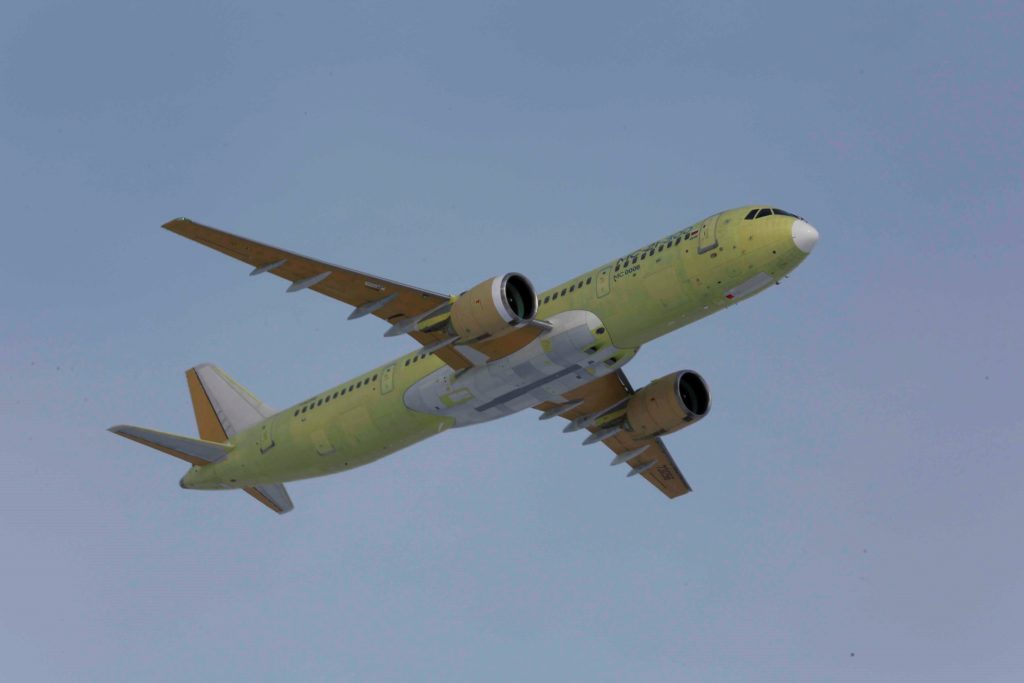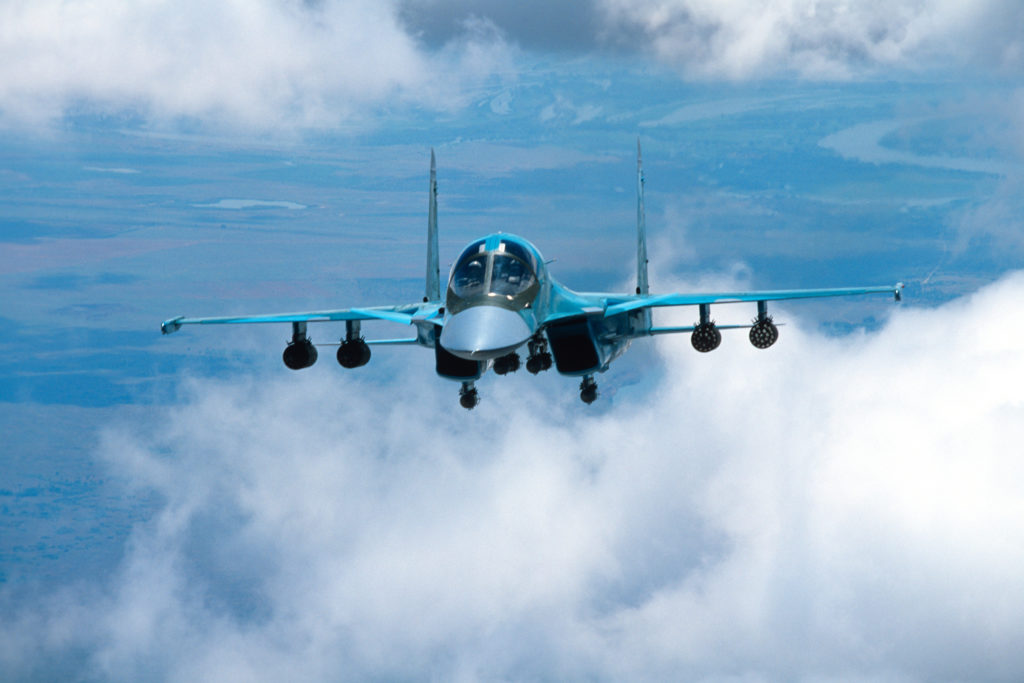Russia is continuing to consolidate its defense industry, and now its aviation industry, around its largest state-owned defense industry holding, Rostec.
According to Rostec, the inclusion of United Aircraft Corporation will enable Rostec’s aviation cluster to increase its revenue to RUB1 trillion ($15 billion), pushing the state corporation into the ranks of the world’s leading aircraft manufacturers. With UAC now effectively under Rostec’s control, the entire aircraft production chain has been combined into one entity, which the company hopes will strengthen production cooperation between aircraft manufacturers and parts suppliers.
Following its 2018 announcement, Rostec moved quickly to acquire a 92 percent stake in UAC. Shortly after the announcement, Rostec acquired some 84 percent of the firm. Transfer of the remaining stake has slowed, with no news reported on any moves as of late 2020. The COVID-19 pandemic has likely slowed the transition.
That said, Rostec does list the operation in its 2019 annual report. As such, UAC is the centerpiece of Rostec’s Aviation Cluster, which now holds a majority of Russia’s aviation assets under its aegis. In addition to UAC, the company controls Russian Helicopters, United Engine Corporation, and about 750 component suppliers that support UAC aircraft.
Rostec is currently structured around three key clusters, as follows:
1. Aviation Cluster
1.1 United Aircraft Corporation
1.2 Russian Helicopters
1.3 United Engine Corporation
1.4 Radio-Electronic Technologies Concern
1.5 Technodinamika
2. Conventional Arms, Ammunition and Special Chemistry Cluster
2.1 High Precision Systems
2.2 Techmash
2.3 SPECCHEMISTRY
3. Radio-Electronic Cluster
3.1 Ruselectronics
3.2 Shvabe
3.3 Avtomatika Concern
The move is straight out of a Western manufacturer’s playbook. However, there is one big difference: this is Russia. Consolidation efforts across its industries have always been problematic, as the storied formation of UAC itself can attest. The numerous Soviet-era firms that now form UAC have been slow to adapt to this era of assimilation. While Rostec may have a majority of Russian aerospace under its aegis, getting it restructured – a process UAC has long been developing – will take time.
Meanwhile, efforts to transform United Aircraft Corporation operations continue. The company has accelerated efforts to better consolidate its varied operations under a single structure. The goal is to transform the company into an international player in the aviation market.
The company has continued to rejigger its commercial operations. Its most recent move has been to rename Sukhoi Civil Aircraft Company (SCAC) the Regional Aircraft Division. This new division was combined with the UAC‑Integration Center and now forms the Commercial Aviation Division of Irkut. Product responsibilities for the new division include the MC-21 and SSJ-100. Upcoming projects such as the joint Chinese/Russian CR929 long-haul twinjet and the Ilyushin Il‑114-300 turboprop relaunch will also fall under the auspices of the division. The company expects the new structure to boost productivity, lower costs, and eliminate redundancies. In addition, the move may make it easier to separate the civil operations from the military units, which have been the subject of Western sanctions.
With military programs self-sustaining, UAC is focused on developing its commercial aircraft into better international competitors. Two key programs are leading this effort: the Superjet 100 and the under-development MC-21. The company added another developmental aircraft program to its portfolio in late 2016 – the CR929, a widebody long-haul passenger aircraft to be developed in partnership with China’s COMAC.
The market for the Superjet is primarily in Russia. Sukhoi sought out partnerships with Western component manufacturers to make the aircraft more attractive on the international market, and the program had some international success. However, as relations between Russia and the U.S. and Europe have soured, the country has begun moving to make the aircraft more “Russian” in terms of component outsourcing.
The acceleration of the SSJ-New program is a prime example of these concerns. Many Superjet components are sourced from Western suppliers, and new or enhanced sanctions imposed by the United States could disrupt the production and maintenance of the aircraft. Under the SSJ-New effort, Russia is looking to shift a majority of the subcomponent production away from Western manufacturers to local producers, most of which are under Rostec’s aegis.
While the demand for this new aircraft does not justify the cost, the Russian government is intent on propping up the program despite the limited market. Sales of the Superjet have not been as high as UAC expected. While the Superjet has been successful in the Russian market, there are too few Russian airlines to maintain annual demand for the aircraft.
The next commercial project is the MC-21, a narrowbody airliner derived from the now-defunct Yak‑242. The MC-21 achieved a major milestone with its successful – though long-delayed – maiden flight on May 28, 2017. Irkut believes it can sell 980 MC-21s by 2035, which is optimistic. Abroad, the aircraft faces formidable competition from the well-established Airbus A320 and Boeing 737 families and their re-engined variants, the A320neo and 737 MAX. As in the Superjet market, Russian customers are likely to account for the bulk of future MC-21 sales.

In the face of the COVID-19 crisis, Rostec has forced its airline operation, Red Wings, to buy up to 60 Superjet 100 and 16 MC-21 airliners by 2024. The move is aimed at the continuity of production at UAC and establishing Red Wings as a Russian carrier with a fleet of predominantly Russian aircraft. According to a report in Russian Aviation Insider, the “Red Wings will be granted certain preferences in terms of leasing terms, subsidies in-flight hours and in fares to Siberia and the Far East of Russia – the flights and routes to be served by this new fleet.”
Complicating production on both aircraft is the introduction of U.S. sanctions on UAC and its subsidiary operations. These sanctions could disrupt aircraft production and maintenance. Any disruption in the supply chain could be catastrophic for these programs, which, in recent years, have often struggled to raise enough capital to continue operations. Additionally, the disruption could lead airlines, especially those outside Russia, to hesitate before ordering the aircraft.
This situation was likely a key driver in the formation of China-Russia Commercial Aircraft International Co (CRAIC), a joint venture formed to build a new widebody twin-engine jet. The new aircraft, dubbed the CR929, is a planned family of 280- to 350-seat widebody twin-engine jet airliners. The program is expected to use several Russian technologies leveraged from the MC-21, such as composite wing components and fly-by-wire, to name a couple.
The partnership is an interesting one, as it combines Russia’s technical acumen with China’s production capability. While the CR929 is unlikely to break out from its home markets, China’s need for aircraft will likely feed production and, by itself, make the program profitable. However, the two partners are facing difficulties in their negotiations. COMAC is looking for exclusive rights to sell the aircraft on its home market. Irkut would get rights to sell to the rest of the world – along with the challenge of facing Airbus and Boeing as competitors. As can be expected, Irkut is not pleased, as China is anticipated to offer the greatest potential for future sales of the model. The acrimonious difficulties may be too big for the partners to reconcile, and it would not be surprising to see the entire project scrapped before it ever hits the runway.

While the firm would prefer to eventually have a majority of its sales in commercial markets, military aircraft currently remain the cash cow for the company. As part of its ambitious State Armaments Program (SAP), Russia plans to continue to bolster and modernize the country’s air force. Under the current effort, modernization of older models will continue, while new procurement will likely focus on heavy fighters such as the Su-35. This shift in the old market sharing efforts of the past, which saw procurement of both MiG and Sukhoi aircraft, was a key driver in the recent merger of MiG under the auspices of Sukhoi.
Nevertheless, even in the military sector, sanctions over the Ukraine conflict are showing their impact. Over the years that the sanctions have been imposed, delays in procurements have mounted due to the loss of imported hardware and equipment, primarily from Ukraine. The country has turned to indigenous production of these components, but this has led to increased costs and stretched timetables. As such, the near-term situation may see firms such as Rostec and UAC focusing on infrastructure development rather than increased production output.
Forecast International’s Defense & Aerospace Companies, Volume II – International service includes coverage of over 90 top companies and subsidiaries outside North America, with a focus on key players in Europe and Asia. Each of the volume’s 50+ reports contains data on recent programs, mergers, and joint ventures. Among the notable corporations covered are OEMs such as Airbus, Aviation Industry Corporation of China (AVIC), BAE Systems, UAC, and Embraer. Also featured are Tier I and Tier II contractors such as Rolls-Royce, Hanwha, Rafael, RUAG, and IHI Corporation. Click here to learn more.
A military history enthusiast, Richard began at Forecast International as editor of the World Weapons Weekly newsletter. As the Internet grew in importance as a research tool, he helped design the company's Forecast Intelligence Center and currently coordinates the EMarket Alert newsletters for clients. Richard also manages social media efforts, including two new blogs: Defense & Security Monitor, covering defense systems and international issues, and Flight Plan, which focuses on commercial aviation and space systems. For over 30 years, Richard has authored the Defense & Aerospace Companies, Volume I (North America) and Volume II (International) services. The two books provide detailed data on major aerospace and defense contractors. He also edits the International Contractors service, a database that tracks all the contractors involved in the programs covered in the FI library. More recently he was appointed Manager, Information Services Group (ISG), a new unit that encompasses developing outbound content for both Forecast International and Military Periscope.



